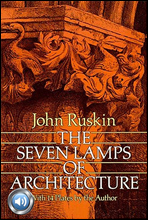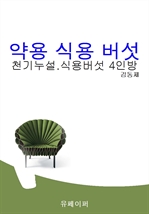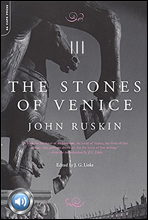
건축의 일곱개 램프 (The Seven Lamps of Architecture) 들으면서 읽는 영어 명작 406
- 저자
- 존 러스킨 (John Ruskin) 저
- 출판사
- 유페이퍼
- 출판일
- 2016-10-13
- 등록일
- 2017-06-07
- 파일포맷
- EPUB
- 파일크기
- 6MB
- 공급사
- YES24
- 지원기기
- PC PHONE TABLET 웹뷰어 프로그램 수동설치 뷰어프로그램 설치 안내
책소개
--------- 오디북 북 + 이북이 / 하나로 = 입체전자책 ----------- - 전자책과 오디오북이 하나로 합쳐진 입체전자책 - 영어 학습을 위한 최고의 입체 전자책입니다. - 읽으면서 한 번의 클릭으로 동시에 듣습니다. (크롬 환경 최적격) - 주제(Chapter) 마다 한 번의 클릭으로 편리하게 들을 수 있습니다. - 핸드폰도 편리하며 CD가 필요 없습니다. - 추천작이며 엄선된 작품입니다. - ★ 보이스 전체를 다운로드 받아서 편리하게 들을 수 있습니다 ★ ------------- Audio book + e book = solid book -------------- ★ 부록에 『영어 글쓰기 기본 (The Elements of Style)』첨부. 100년 가까운 세월 동안 미국에서 가장 많이 팔린 글쓰기 책이며, 2011년에 타임지가 선정한 1923년 이후 영어로 발행된 가장 영향력 있는 100대 도서 중 하나. -------------- 일러스트가 포함된 책이다. 「건축의 일곱 개 램프」는 예술가들이 따라야 할 일곱 개의 미의 원칙 등을 건축물에 대한 스케치와 함께 밝히고 있다.『예술의 정치경제』를 발표하여 버나드쇼우에 의해 사회주의자 막스(Marx)에 비교되기도 했다.) The Seven Lamps of Architecture is an extended essay, first published in May 1849 and written by the English art critic and theorist John Ruskin. The 'lamps' of the title are Ruskin's principles of architecture, which he later enlarged upon in the three-volume The Stones of Venice.[1] To an extent, they codified some of the contemporary thinking behind the Gothic Revival. At the time of its publication A. W. N. Pugin and others had already advanced the ideas of the Revival and it was well under way in practice. Ruskin offered little new to the debate, but the book helped to capture and summarise the thoughts of the movement. The Seven Lamps also proved a great popular success, and received the approval of the ecclesiologists typified by the Cambridge Camden Society, who criticised in their publication The Ecclesiologist lapses committed by modern architects in ecclesiastical commissions.






